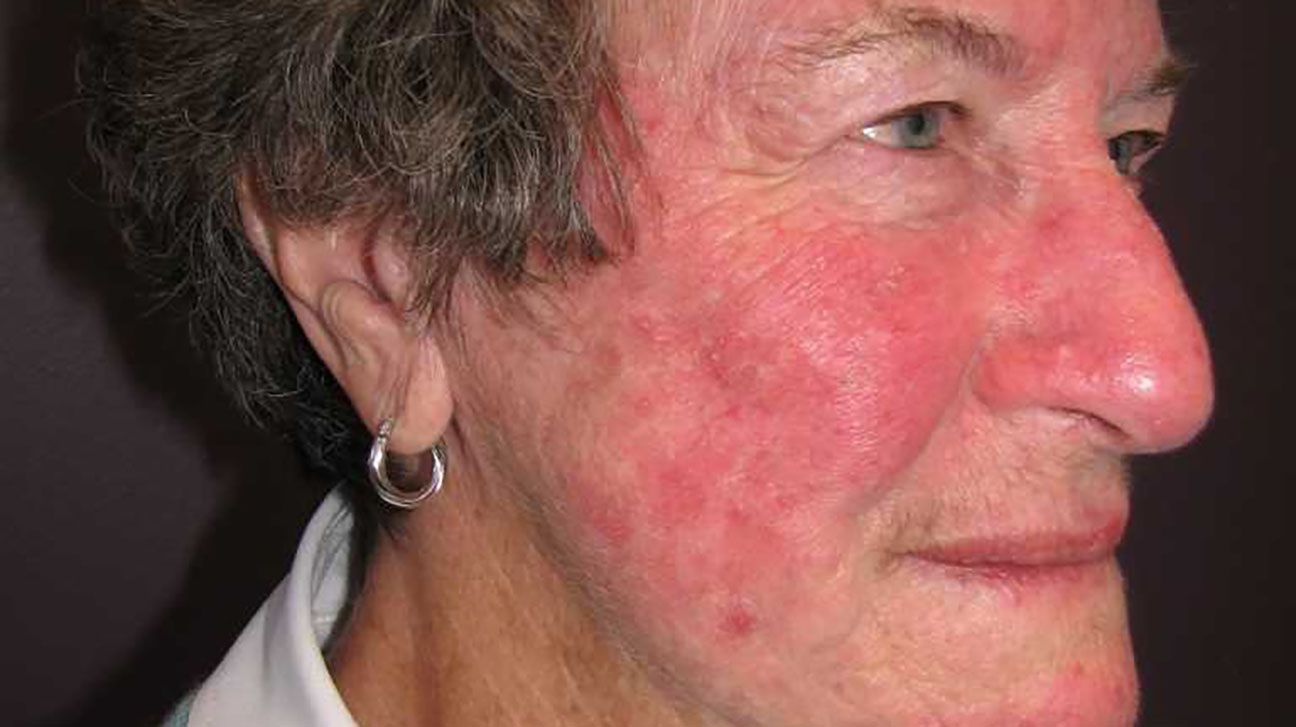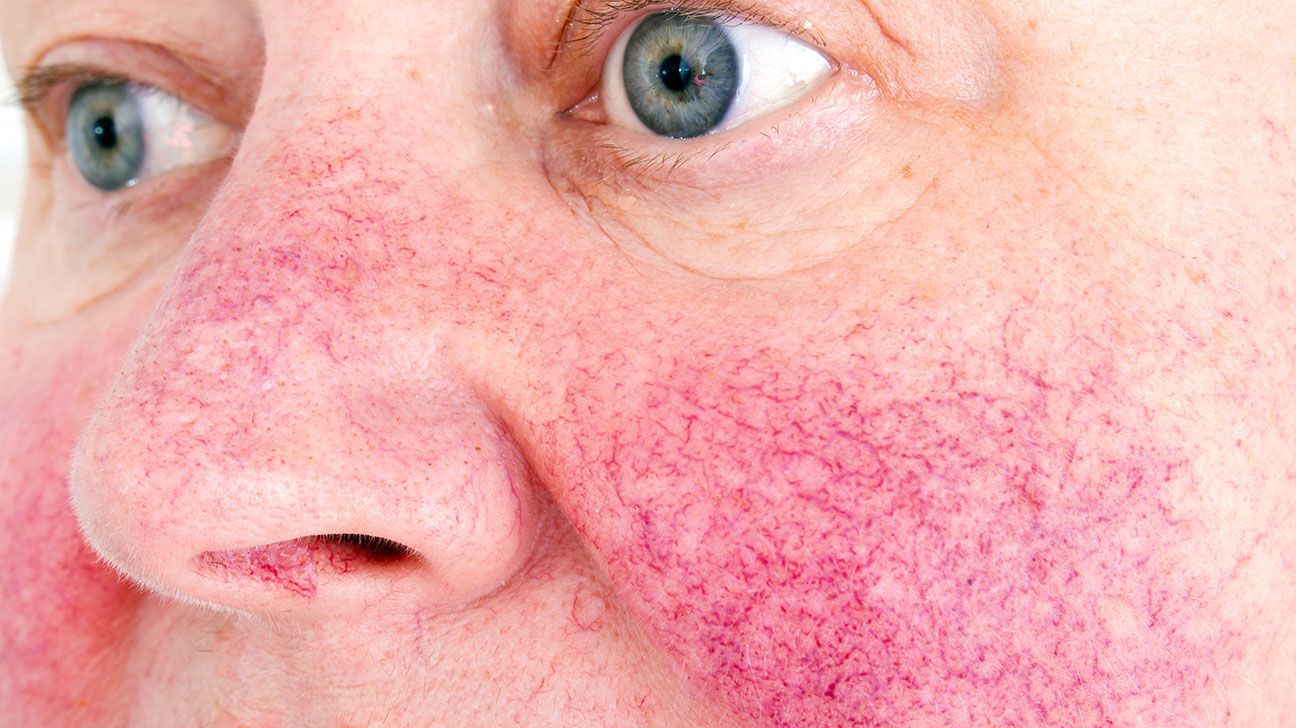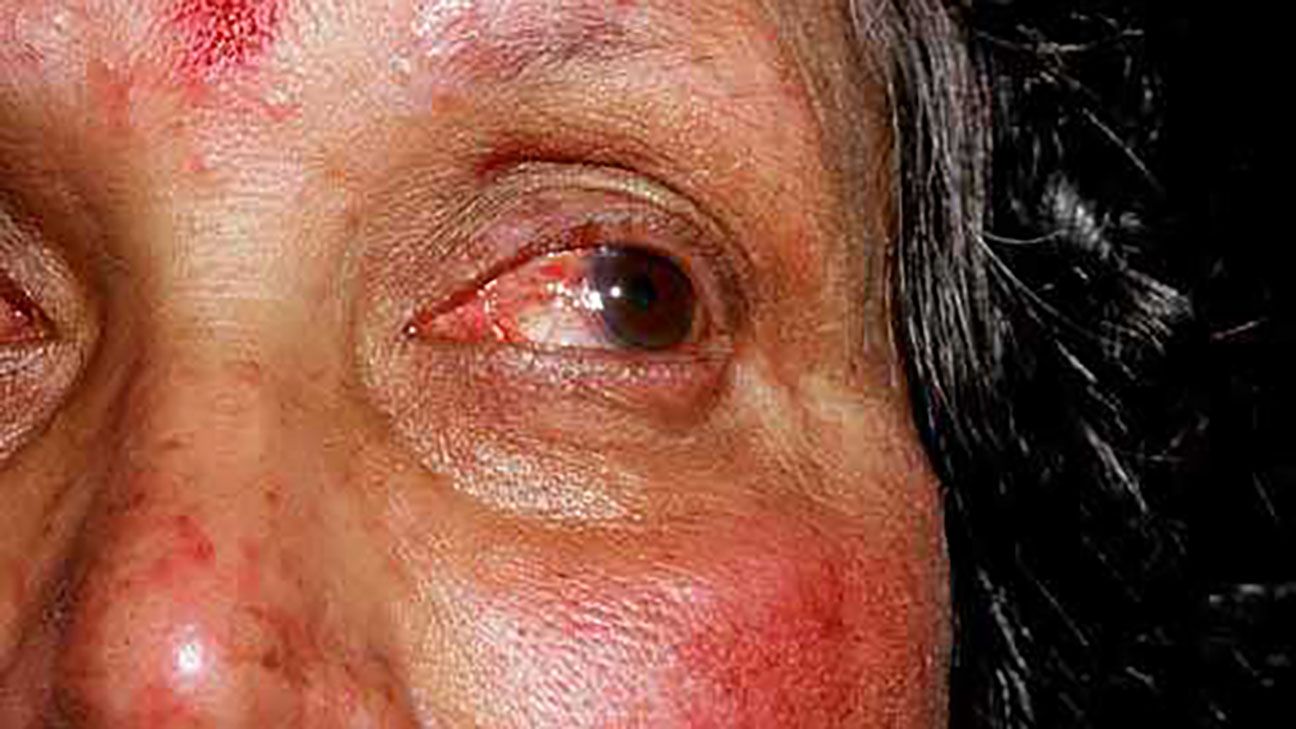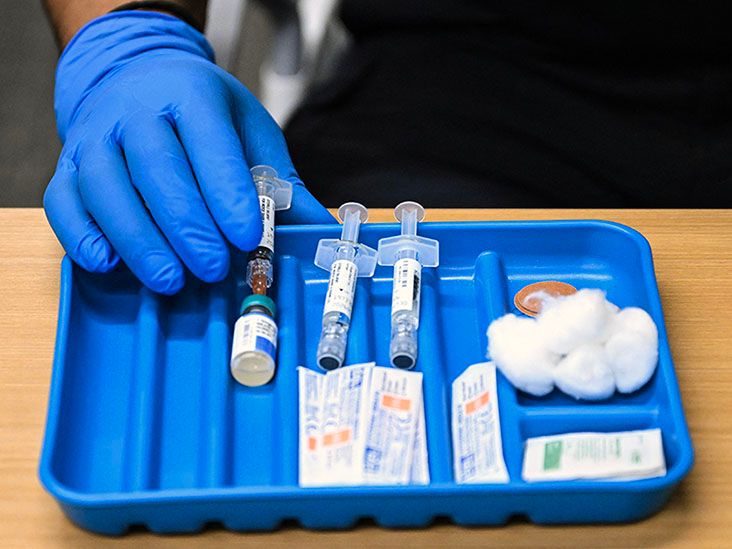Papulopustular rosacea is a subtype of rosacea, a common skin disorder characterized by facial redness and flushing. Papulopustular rosacea causes pus-filled blemishes called pustules and red, swollen bumps.
These lesions may resemble acne and typically appear on the forehead, cheeks, and chin. People also refer to papulopustular rosacea as subtype 2.
This article looks at papulopustular rosacea, what can cause it, how to manage it, and more.

People with papulopustular rosacea may experience a range of symptoms, including:
- Persistent facial redness: Ongoing facial redness, often described as a flushed or “rosy” appearance on light skin, is a potential sign of rosacea. On darker skin, this may look like a dusky brown discoloration. Redness typically presents on the cheeks, nose, chin, and forehead.
- Small red bumps (papules): Papules are small, raised, and inflamed bumps that are typically red. These papules can vary in size and texture, often resembling acne breakouts. They may be tender to the touch and can persist for several days or weeks before resolving. Papules are a characteristic feature of papulopustular rosacea.
- Pus-filled bumps (pustules): Pustules are small, pus-filled bumps that appear on the affected face areas. These pimples can be inflamed and may have a white or yellowish appearance. Pustules can be tender or painful, contributing to the overall inflammatory response.
- Visible blood vessels (telangiectasias): These are often small, dilated capillaries that appear close to the skin’s surface. The condition is called telangiectasia. They may appear as thin red lines or networks and can contribute to the persistent redness of the affected areas.




This section looks at how papulopustular rosacea may present.
Various factors can trigger or worsen papulopustular rosacea symptoms.
Common triggers include exposure to sunlight, hot or cold weather, spicy foods, alcohol, hot beverages, stress, and certain medications.
Identifying and avoiding a person’s individual triggers can help manage the condition.
Learn moreLearn more about rosacea flare-ups and how to manage them.
The exact cause of papulopustular rosacea is
However, experts believe several factors contribute to its development, including abnormalities in blood vessels, overactive immune response, alterations in skin microorganisms, and
These factors likely interact to trigger the characteristic symptoms.
Papulopustular rosacea is a chronic condition that requires long-term management.
- Topical medications: Dermatologists frequently prescribe topical medications as a first-line treatment for papulopustular rosacea. People apply these to the affected skin to reduce inflammation and manage symptoms.
- Antibiotics: In moderate to severe cases of papulopustular rosacea, doctors may prescribe oral antibiotics to manage inflammation and reduce the number of papules and pustules.
- Isotretinoin: Doctors may consider isotretinoin in severe cases of papulopustular rosacea resistant to other treatments. Isotretinoin is an oral medication that targets the underlying factors contributing to rosacea, including abnormal oil production. It can provide long-term improvement but requires careful monitoring due to potential side effects.
- Laser treatment: Laser therapy and other procedures may also address visible blood vessels or other skin irregularities. Laser treatments target the blood vessels, reducing their appearance and improving the skin’s overall appearance. Other procedures, such as intense pulsed light (IPL) therapy or electrocautery, may also target specific skin concerns.
Read on to learn the answers to some commonly asked questions about papulopustular rosacea.
Can you pop papulopustular rosacea?
Dermatologists do not recommend people try to pop or squeeze facial lesions.
Papulopustular rosacea consists of inflamed papules and pustules on the skin. Attempting to pop or squeeze them can aggravate the condition and lead to further inflammation and potential scarring.
How long do rosacea papules last?
The duration of rosacea papules can vary from person to person. Generally, papules associated with rosacea persist for several days to weeks before resolving.
However, rosacea is a
Papulopustular rosacea is a subtype of rosacea characterized by facial redness, papules, pustules, and visible blood vessels.
The symptoms primarily affect the central face, including the cheeks, nose, chin, and forehead. The exact cause is unknown, but factors such as abnormal blood vessels, immune system dysfunction, and genetics likely contribute.
Treatment aims to manage symptoms, reduce inflammation, and prevent flare-ups through topical and oral medications, laser therapy, and lifestyle modifications. It is a chronic condition requiring long-term management.
Avoiding triggers, such as spicy foods and alcohol, can help minimize symptoms. Consulting a dermatologist is crucial for an accurate diagnosis and personalized treatment plan.


